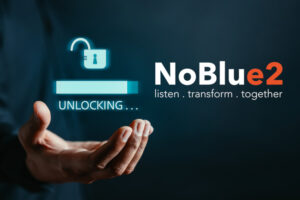Accurately forecasting the demand for seasonal food and drinks goods is a tricky business. It has ramifications throughout your operation. Purchasing needs to know what to buy and when; the warehouse needs to plan for storage requirements, stock movements and staffing needs; and of course, it impacts your budgetary process as well as your ultimate income and profitability.
So how do you forecast accurately when you’re dealing with seasonal food and drinks products?
Demand Planning for Better Stock Accuracy
Balancing supply and demand can be problematical. If you get it wrong and over-order, you will end up needlessly storing costly excess stock – or you will lose costs due to shrinkage if your produce is perishable. And if you don’t order enough, then you will miss out on sales or might have to pay to expedite goods deliveries from your suppliers. Either way, you lose out.
So, getting it right is imperative. It means you can keep customers happy, will continue to generate revenue, and build your profits.
Identifying Seasonality
Identifying which products are seasonal and when the purchase peaks happen is your first priority. In the food and drinks sector, some of these are easy to recognise. Brussels sprouts and turkey at Christmas, chocolate eggs at Easter, and pumpkins and sweets for Halloween, for example.
But there are more subtle nuances too. Children’s packed lunch items, for example, may see declines during school holidays. And with the notoriously unpredictable British weather, where do you even start with predicting for when seasonal food preferences changes. It’s tough to predict when consumers will switch from soups to salads, or when the BBQ season will start and end.
Looking at Historical Sales
Past sales figures will give you some idea of the shape of your peaks and troughs. It doesn’t tell the whole story though, especially when it comes to weather-driven purchases.
But with a clear understanding of the overall picture, you can forecast future sales more accurately. By comparing the peaks to normal demand, you can predict the likely seasonal demand and budget accordingly.
Building in Scope for Uncertainty
With seasonal food and drink, there will always be some level of uncertainty. Some foods rise and fall in popularity and there have recently been noticeable trends with alcoholic drinks – with the rise in popularity of gin, canned cocktails and craft beers, for example.
Understanding this and building in some contingency might be right for your business. Having popular products available for sale might give you the edge over your competitors. But equally, you don’t want to be left with stock at the end of the seasonal period.
To decide on the right levels of contingency, you need to calculate the difference between the lack of revenue from missed sales opportunities and the costs of discounting or writing off unsold stock. This will reveal if there are clear advantages to one strategy or the other.
This will differ according to the product though. And doing these calculations SKU by SKU is a lengthy and tedious process, so it’s best to use automated models where you can.
The Forecasting Process
There are some basic steps in the process of calculating and predicting your required stock levels.
Once you have decided on the period that you will plan for, you should review the historical demand, looking at past seasons – as far back as you think is relevant.
Then, you need to factor in any variables and trends. This would include seasonality, but also how much marketing activity you will be doing, what your competitors are up to, and any general trends or favourable publicity.
You can then move on to create your financial models, including best-case and worst-case scenarios. Finally, you should make adjustments, tweaking your forecasts in both the short and long term.
Improving Seasonal Forecasts
Knowing what and when to order will never be an accurate science. But most businesses can improve on their existing processes.
Using technology to help with modelling and forecasting scenarios can be a tremendous help. It reduces your reliance on spreadsheets and much of the leg work can be automated to speed up the planning process. ERP solutions, for example, can automatically pull in costs and pricing for each item, along with historical sales figures and trends.
NetSuite Planning and Budgeting uses built-in predictive features that improve budgeting and forecasting, delivering detailed reports, scenarios and models.
The cloud-based system can undertake common financial planning tasks, including allocation and spreading and you can use it collaboratively across departments, allowing all departments in the company to be involved in making informed decisions about seasonal forecasts.
If you would like to produce more accurate forecasts for your food and drinks business, let us give you a hand. Contact us to speak to a certified consultant or arrange a free business consultation.










